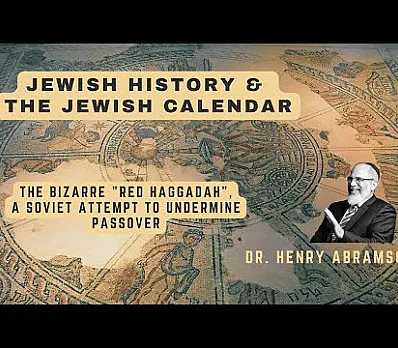{
"clip_details": {
"clip": {
"is_admin": 0,
"is_owner": 0,
"handle": "orange-seder-plate",
"title": "The Orange on the Seder Plate",
"author": "Anita Diamant",
"author_handle": "anita-diamant",
"author_initials": "AD",
"covertext": "EVERY JEWISH FAMILY produces a unique version of the Passover seder—the big ritual meal of traditional foods, served aft...",
"user_image": "https://assets.haggadot.com/users/104220/conversions/ADiamant-edit-288x288-thumb.jpg",
"user_image_original": "https://assets.haggadot.com/users/104220/ADiamant-edit-288x288.jpg",
"body": "EVERY JEWISH FAMILY produces a unique version of the Passover seder—the big ritual meal of traditional foods, served after and amid liturgy, storytelling, and song. We’re all surprised at each other’s customs: You eat lamb? You don’t sing “Chad Gad Ya”? And yet, virtually every seder does share a few common elements. Matzoh crumbs all over the floor. Wine stains on the tablecloth. A seder plate containing the traditional symbols of the holiday: a roasted shank bone and hardboiled egg, recalling the days of the Temple sacrifices; horseradish and salt water for the bitterness of oppression; parsley for spring; haroset, a mixture of wine, nuts, and fruit symbolizing mortar and the heavy labor performed by the Israelite slaves. And for lots of us, an orange. The ancient Hebrews who fled into the wilderness didn’t know from citrus fruit, and there certainly weren’t any Valencias on Grandma’s seder plate. Starting in the 1980s, the new holiday symbol has been showing up on an ever-increasing number of Passover tables. The custom originated with the teacher and writer Susannah Heschel, who first set it out as a symbol of inclusion for lesbian and gay Jews, and in following years for all those who have been marginalized in the Jewish community. Thanks largely to the Internet, Jewish women adopted the fruit as a symbol of their inclusion, and now there are oranges on seder plates all over the world, as well as alternative stories about how they got there in the first place. Regardless of its genesis, that orange now makes several subtle spiritual and political statements. For one thing, it represents the creative piety of liberal Jews, who honor tradition by adding new elements to the old. The orange also announces that those on the margins have fully arrived as coauthors of Jewish history, as does the presence of another new ritual item, the Miriam’s Cup, which acknowledges the role of Moses’ sister, the singer-songwriter-prophet, in the story. The orange is a living part of the ancient pedagogic strategy of Passover. We are commanded to teach our children about the Exodus from Egypt in a manner so vivid that everyone at the table—but especially the kids—remembers (not merely imagines but actually remembers) what it feels like to be a hungry, hunted slave. The seder makes memory manifest, tangible, and solid as Grandpa’s kiddush cup. Just like the shank bone, the orange is there so that someone under the age of thirteen will ask, “What’s that thing doing on the seder plate?” The orange is there so that Mom or Dad can say, “I’m so glad you asked that question. The orange is a symbol of the struggle by Jews who used to be ignored by our tradition—like gays and lesbians, and women, and Jews by choice—to become full partners in religious and community life. The orange is a sign of change, too, because now all kinds of Jews are rabbis and cantors and teachers and leaders. And the orange is a mark of our confidence in the Jewish future, which means that someday maybe you too will bring something new to the seder plate.” The orange on the seder plate is both a playful and a reverent symbol of Judaism’s ability to adapt and thrive. It also celebrates the abundant diversity of creation. After all, God, who made the heavens and the earth, and dinosaurs and lemurs and human beings, is clearly a lover of variety and change—not to mention oranges.",
"cliptype": "text",
"clipsource": "Pitching My Tent: On Marriage, Motherhood, Friendship & Other Leaps of Faith",
"featured": 1,
"featuredIn": null,
"is_public": 1,
"is_published": 1,
"media": {
"image": null,
"audio": null,
"video": null
},
"thumbnail": null,
"clip_section": [
{
"haggadah_section": "Commentary / Readings",
"slug": "commentary-readings"
}
],
"likes": 0,
"downloads": 536,
"tags": [
{
"tag": "LGBTQ",
"slug": "lgbtq"
},
{
"tag": "Feminism",
"slug": "feminism"
},
{
"tag": "Justice",
"slug": "justice"
},
{
"tag": "Seder Plate",
"slug": "seder-plate"
},
{
"tag": "Orange",
"slug": "orange"
}
],
"themes": [],
"language": "0",
"is_bookmarked": "0",
"is_liked": 0,
"meta_tags": {
"title": "The Orange on the Seder Plate | Passover haggadah by Anita Diamant",
"description": "Our simple platform allows you to create a custom Passover Haggadah, with access to unique content contributed by our community. Find artwork, family",
"keywords": "",
"og:type": "article",
"og:url": "https://www.haggadot.com/clip/orange-seder-plate",
"og:title": "The Orange on the Seder Plate | Passover haggadah by Anita Diamant",
"og:description": "Our simple platform allows you to create a custom Passover Haggadah, with access to unique content contributed by our community. Find artwork, family",
"og:image": ""
}
}
},
"contributed_by": {
"author": "Anita Diamant",
"handle": "anita-diamant",
"author_initials": "AD",
"total_books": 0,
"total_clips": 1,
"total_followers": 0,
"is_following": 0
},
"user_book": null,
"clips_by_author": [],
"clip_remake_history": 0,
"meta_tags": {
"title": "The Orange on the Seder Plate | Passover haggadah by Anita Diamant",
"description": "Our simple platform allows you to create a custom Passover Haggadah, with access to unique content contributed by our community. Find artwork, family",
"keywords": "",
"og:type": "article",
"og:url": "https://www.haggadot.com/clip/orange-seder-plate",
"og:title": "The Orange on the Seder Plate | Passover haggadah by Anita Diamant",
"og:description": "Our simple platform allows you to create a custom Passover Haggadah, with access to unique content contributed by our community. Find artwork, family",
"og:image": ""
}
}
The Orange on the Seder Plate
Haggadah Section: Commentary / Readings
LGBTQFeminismJusticeSeder PlateOrange
EVERY JEWISH FAMILY produces a unique version of the Passover seder—the big ritual meal of traditional foods, served after and amid liturgy, storytelling, and song. We’re all surprised at each other’s customs: You eat lamb? You don’t sing “Chad Gad Ya”? And yet, virtually every seder does share a few common elements. Matzoh crumbs all over the floor. Wine stains on the tablecloth. A seder plate containing the traditional symbols of the holiday: a roasted shank bone and hardboiled egg, recalling the days of the Temple sacrifices; horseradish and salt water for the bitterness of oppression; parsley for spring; haroset, a mixture of wine, nuts, and fruit symbolizing mortar and the heavy labor performed by the Israelite slaves. And for lots of us, an orange. The ancient Hebrews who fled into the wilderness didn’t know from citrus fruit, and there certainly weren’t any Valencias on Grandma’s seder plate. Starting in the 1980s, the new holiday symbol has been showing up on an ever-increasing number of Passover tables. The custom originated with the teacher and writer Susannah Heschel, who first set it out as a symbol of inclusion for lesbian and gay Jews, and in following years for all those who have been marginalized in the Jewish community. Thanks largely to the Internet, Jewish women adopted the fruit as a symbol of their inclusion, and now there are oranges on seder plates all over the world, as well as alternative stories about how they got there in the first place. Regardless of its genesis, that orange now makes several subtle spiritual and political statements. For one thing, it represents the creative piety of liberal Jews, who honor tradition by adding new elements to the old. The orange also announces that those on the margins have fully arrived as coauthors of Jewish history, as does the presence of another new ritual item, the Miriam’s Cup, which acknowledges the role of Moses’ sister, the singer-songwriter-prophet, in the story. The orange is a living part of the ancient pedagogic strategy of Passover. We are commanded to teach our children about the Exodus from Egypt in a manner so vivid that everyone at the table—but especially the kids—remembers (not merely imagines but actually remembers) what it feels like to be a hungry, hunted slave. The seder makes memory manifest, tangible, and solid as Grandpa’s kiddush cup. Just like the shank bone, the orange is there so that someone under the age of thirteen will ask, “What’s that thing doing on the seder plate?” The orange is there so that Mom or Dad can say, “I’m so glad you asked that question. The orange is a symbol of the struggle by Jews who used to be ignored by our tradition—like gays and lesbians, and women, and Jews by choice—to become full partners in religious and community life. The orange is a sign of change, too, because now all kinds of Jews are rabbis and cantors and teachers and leaders. And the orange is a mark of our confidence in the Jewish future, which means that someday maybe you too will bring something new to the seder plate.” The orange on the seder plate is both a playful and a reverent symbol of Judaism’s ability to adapt and thrive. It also celebrates the abundant diversity of creation. After all, God, who made the heavens and the earth, and dinosaurs and lemurs and human beings, is clearly a lover of variety and change—not to mention oranges.
Source:
Pitching My Tent: On Marriage, Motherhood, Friendship & Other Leaps of Faith
Inspired to create
your own Haggadah?
Make your own Haggadah and share with other Seder lovers around the world
Have an idea
for a clip?
People like you bring their creativity to Haggadot.com when they share their ideas in a clip
Support Us
with your donation
Help us build moments of meaning and connection through
home-based Jewish rituals.
OUR TOP CONTRIBUTORS
Passover Guide
Hosting your first Passover Seder? Not sure what food to serve? Curious to
know more about the holiday? Explore our Passover 101 Guide for answers
to all of your questions.






















